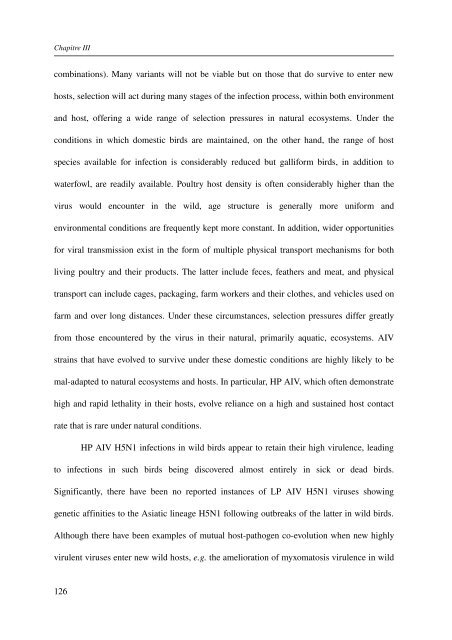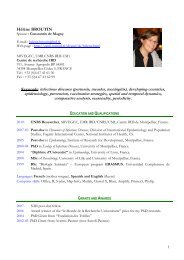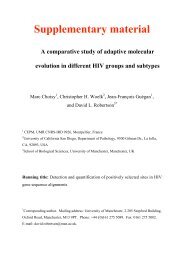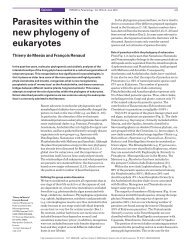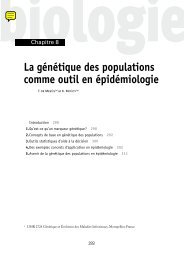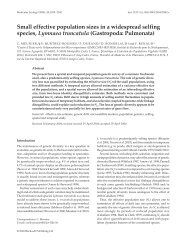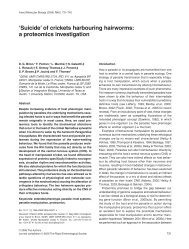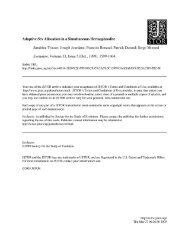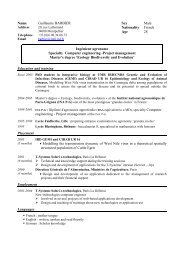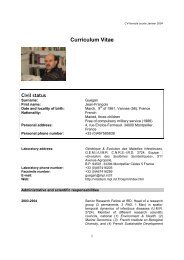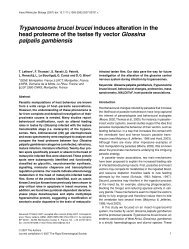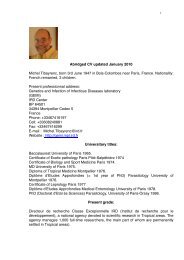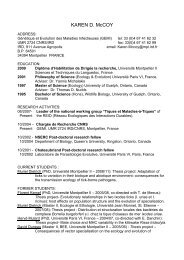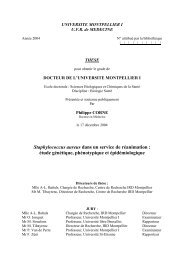écologie des virus influenza aviaires en Camargue - IRD
écologie des virus influenza aviaires en Camargue - IRD
écologie des virus influenza aviaires en Camargue - IRD
Create successful ePaper yourself
Turn your PDF publications into a flip-book with our unique Google optimized e-Paper software.
Chapitre IIIcombinations). Many variants will not be viable but on those that do survive to <strong>en</strong>ter newhosts, selection will act during many stages of the infection process, within both <strong>en</strong>vironm<strong>en</strong>tand host, offering a wide range of selection pressures in natural ecosystems. Under theconditions in which domestic birds are maintained, on the other hand, the range of hostspecies available for infection is considerably reduced but galliform birds, in addition towaterfowl, are readily available. Poultry host d<strong>en</strong>sity is oft<strong>en</strong> considerably higher than the<strong>virus</strong> would <strong>en</strong>counter in the wild, age structure is g<strong>en</strong>erally more uniform and<strong>en</strong>vironm<strong>en</strong>tal conditions are frequ<strong>en</strong>tly kept more constant. In addition, wider opportunitiesfor viral transmission exist in the form of multiple physical transport mechanisms for bothliving poultry and their products. The latter include feces, feathers and meat, and physicaltransport can include cages, packaging, farm workers and their clothes, and vehicles used onfarm and over long distances. Under these circumstances, selection pressures differ greatlyfrom those <strong>en</strong>countered by the <strong>virus</strong> in their natural, primarily aquatic, ecosystems. AIVstrains that have evolved to survive under these domestic conditions are highly likely to bemaladapted to natural ecosystems and hosts. In particular, HP AIV, which oft<strong>en</strong> demonstratehigh and rapid lethality in their hosts, evolve reliance on a high and sustained host contactrate that is rare under natural conditions.HP AIV H5N1 infections in wild birds appear to retain their high virul<strong>en</strong>ce, leadingto infections in such birds being discovered almost <strong>en</strong>tirely in sick or dead birds.Significantly, there have be<strong>en</strong> no reported instances of LP AIV H5N1 <strong>virus</strong>es showingg<strong>en</strong>etic affinities to the Asiatic lineage H5N1 following outbreaks of the latter in wild birds.Although there have be<strong>en</strong> examples of mutual hostpathog<strong>en</strong> coevolution wh<strong>en</strong> new highlyvirul<strong>en</strong>t <strong>virus</strong>es <strong>en</strong>ter new wild hosts, e.g. the amelioration of myxomatosis virul<strong>en</strong>ce in wild126


